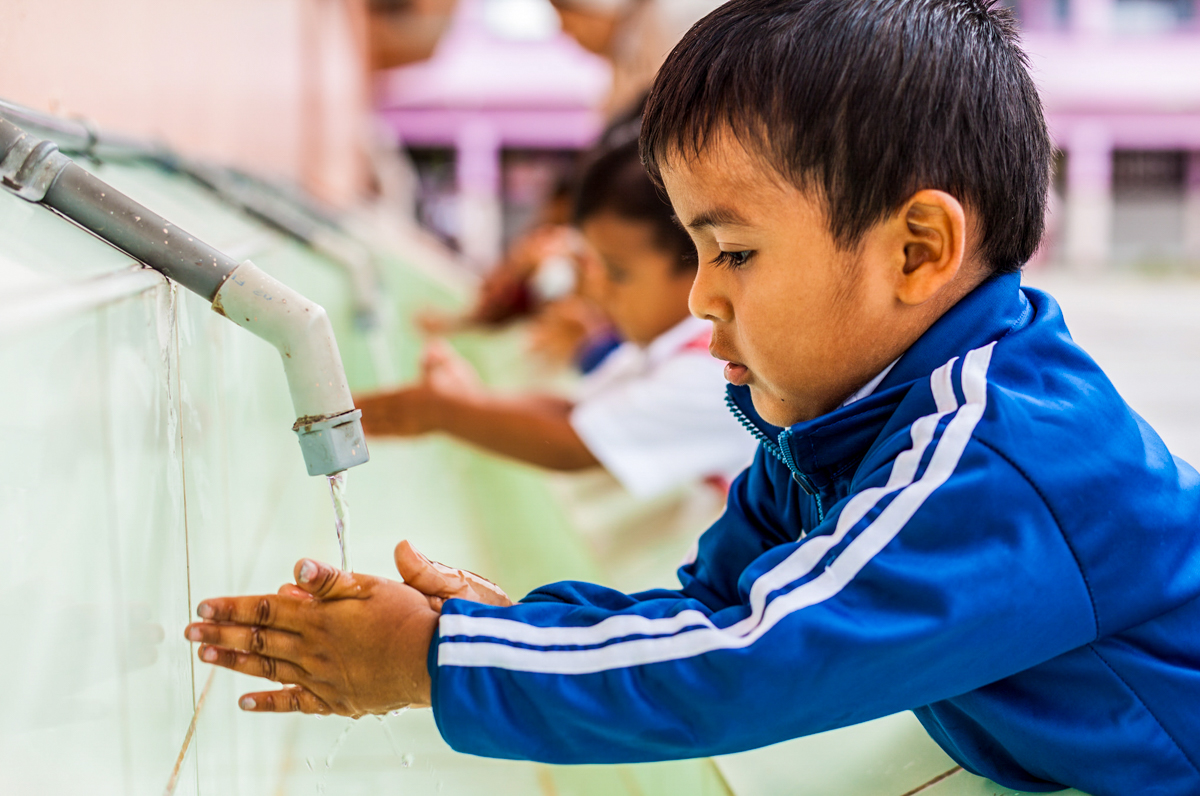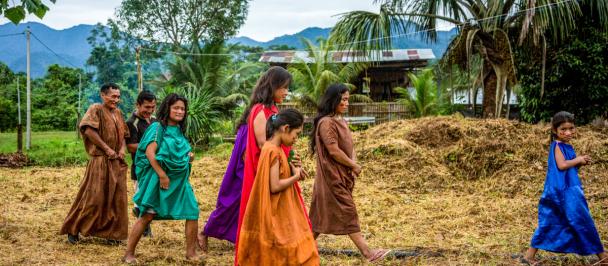More than three million people in Peru don’t have clean water to wash their hands. Continuous and safe clean water is fundamental for life, to ensure adequate hygiene and to stop epidemics, like COVID-19. Photo: UNDP Peru
The spread of COVID-19 has shed some light on the weaknesses of health systems across the world and how crucial it is to act quickly. There has been a lot of emphasis on prevention, and the sanitary measures everyone can and must take to stop the infection. One of these is frequent hand washing.
But how can the more than three million people in Peru who don’t have clean water wash their hands? And the 50 million people in Latin America?
Washing your hands with water and soap, many times a day, is one of the main ways to avoid infection, since viruses are covered in a lipid layer which can be destroyed with soap, in the same way that soap washes grease from dirty plates. Frequent hand washing has helped stop the spread of many other epidemics, such as cholera and Ebola.
In 1991, at the beginning of Peru’s cholera epidemic that affected 322,562 people and caused 2,909 deaths, only 51 percent of Peruvians had clean water and 41 percent had sanitation. In 2000, once the epidemic was controlled, almost 70 percent of Peruvians had clean water, which was key to stopping the spread.
Water is fundamental to life
Continuous and safe clean water is fundamental for life, to ensure adequate hygiene and to stop epidemics. Recently, the Centre for Disease Control in the People’s Republic of China has found evidence that infection with COVID-19 can also happen through fecal-oral-transmission. This enhances the need for adequate sanitation to stop the spread of the disease.
According to Peru’s National Statistics and Information Institute, 90.7 percent of Peru’s urban population has access to public water, either directly reaching their homes or through communal water sources. If we do not include the communal sources, this number is reduced to 85 percent. In rural areas, this number decreases even further, to 74.4 percent and there are some municipalities where access is lower than 50 percent. That is three million people in Peru without water.
Continuous access is vital
Another concern is that having water doesn’t necessarily mean it’s available 24 hours a day. According to a 2018 report by the United Nations Economic Commission for Latin America and the Caribbean, out of 16 cities in Peru, only 19 percent had water for more than 22 hours a day on average and only 56 percent had access for over twelve hours. According to a UNICEF-WHO’s joint monitoring programme, 82 percent of Latin Americans has safe drinking water, whilst only 37 percent have safe sanitation. These numbers put the region’s vulnerability into perspective regarding not only COVID-19 transmission, but also infection through waterborne diseases.
As can be seen, if a person has reduced or no access to water, they are already in a vulnerable situation, which is further exacerbated when there is a pandemic. A lack of water not only limits their possibilities for development and full basic services, but it also increases their risk of contracting and transmitting the virus. Not only because they are unable to wash their hands, but because they have to go out to get water and therefore run the risk of getting sick from drinking untreated water.
Containing the spread of the pandemic
Water is fundamental for containing the spread of this pandemic. Drinking water allows us to wash our hands frequently, wash the clothes and surfaces where the virus could live and allows people to stay inside their homes and not put themselves at risk because they have to go outside to find water. It also decreases the risk of getting other diseases that are easily spread by water, like dengue, which could increase vulnerability to COVID-19. If someone does get infected, continuous access to quality clean water allows health services to function adequately, including hospitals, clinics or people at home in quarantine.
To face the challenge lack of water poses, the Water and Sanitation Services for Lima (SEDAPAL), has been giving out free safe drinking water to families who don’t have it in their homes. UNDP is helping SEDAPAL by providing population density maps and by suggesting the most efficient routes for optimizing this water delivery at all 52 water truck loading points in San Juan de Lurigancho, a district in Lima where more than one million people live.
Reducing water gaps
This measure should be replicated in all of Peru and Latin America, especially in the most vulnerable areas. We recommend that all service providers and municipalities in the region replicate this initiative, with the sole criteria being a lack of water and the need to look for alternative ways to get it to the hardest-to-reach communities. This could either be through direct water delivery or through emergency water sanitation kits. Without drinking water and sanitation for everyone, we cannot contain the spread of the virus or ensure that people will be able to recover from it when the crisis has passed. Once all of this has passed, we must work together to reduce this gap and ensure that no one has to live without clean water again.

 Locations
Locations

